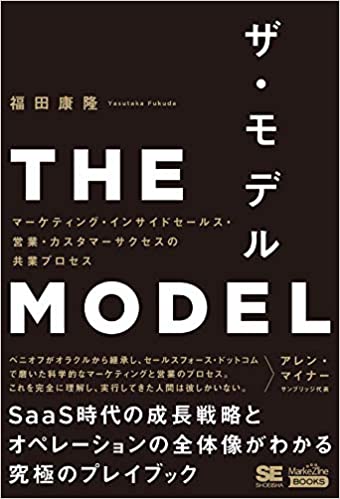Incorporating THE MODEL into Business

Our company develops and operates a Japanese-made headless CMS called microCMS.
The scale of the microCMS business is about pre-Series A (we haven't raised funds yet), and we are currently aiming for Series A.
Our internal resources are still limited, and we are quite occupied with development, leaving little room for marketing and sales efforts.
So far, almost 100% of our product orders have been inbound, which is not bad in itself (meaning there is room for growth). We have a trial period for our paid plans, and the cancellation rate during this period is not bad either.
Recently, I read "THE MODEL" with the desire to establish a method of selling. It talks about streamlining marketing, inside sales, and customer success. There were many parts that I found applicable, so I'm considering integrating them into microCMS.
Outbound Sales
Both founders of our company are engineers (designers), and we are fundamentally not good at sales. We have tried email sales, but it was too inefficient to continue. Instead, focusing on marketing and development and leaning towards an inbound-centric approach seems more cost-effective and suitable for us.
Even without approaching, most inbound leads that come through website form submissions are from SMBs, and our sales department, which handles large enterprises, must unearth their own deals.
This is precisely our situation. Currently, we are focusing on SMBs, but to capture leads from large enterprises that we can't get through inbound, we need to reach out ourselves. However, outbound sales are challenging, so in the U.S., it's common to start with inside sales before moving to outside sales.
In this sense, focusing on inside sales and actively acquiring promising startups among SMBs to create case studies before moving to outbound sales is one strategy we are considering.
Continuing with the translation of your article:
Inside Sales
Inside sales involve nurturing leads and bringing them to the negotiation table.
Since anyone can register for an account on microCMS, the initial lead is essentially the account registration.
Most of these registrations are by engineers. (Engineers are essential for the implementation of a headless CMS.)
In the case of engineers, they tend to have high search capabilities and often research other competing services on their own.
I have a feeling that aggressive sales tactics from our side won’t significantly influence their decision-making process.
Also, engineers who register with personal email addresses often do so for personal blogs or technical verification purposes. In terms of the pie chart, these can be counted as 'unlikely prospects.'
From an operational standpoint, we want these individual developers to use our service freely and without restrictions for their hobbies.
On the other hand, the 'users' of headless CMS in companies are non-engineers (marketers, editors), so we need to approach them too. (The challenging part is that the implementer and the user have different professions.)
Marketers and editors tend to contact us not through account registration but through inquiry forms or requests for materials, leading directly to negotiations. However, their numbers are not particularly high.
One strategy is to host events or seminars to convert leads before they reach the contact form.
We need to implement some marketing strategies to increase leads from non-engineers.
And we must perform solid inside sales to solidify these softer leads.
Given our current resource limitations, it looks like our marketers will have to handle both sales and marketing.
Customer Success
We are committed to support based on user inquiries, and our reputation in this area is quite good.
The goal of customer success is ultimately to increase customer loyalty, leading to new leads through word-of-mouth, and expanding sales through upselling and cross-selling.
According to the book, it’s essential to perform a thorough health check on customers to identify which ones are the most valuable.
The book suggests the following two metrics for this purpose:
- Attribute Score: Scoring based on attributes like company size, industry, job title, etc. (ideal targets)
- Behavior Score: Scoring based on behaviors like website visits, content downloads, etc. (purchase intent)
Marketing Automation (MA) tools can automate these assessments.
For microCMS, potential behavior score indicators might include the number of APIs created, frequency of management console use, and how often the APIs are called. Advanced usage indicators could include whether they’re using repeatable fields or POST-type APIs.
Marketing Automation (MA)
Since the author is the founder of Marketo, the book naturally recommends MA.
Reading this book, I've come to re-acknowledge that MA is indeed an innovative solution.
The history of marketing automation itself is old. It began with Unica, established in 1992, followed by Eloqua in 1999, and then Marketo, HubSpot, and Pardot in the mid-2000s.
As this suggests, MA has actually been around for quite a while.
It might be a familiar concept for those in marketing, but I’m not sure since I come from an engineering background.
The book introduces the concept of "recycling" leads.
As sales targets double or triple, the required number of leads doesn't just double or triple; it needs to increase even more. This is due to the inclusion of lower-probability leads in marketing efforts to increase lead numbers, and the inability of inside sales to keep up with the volume.
The idea is to "recycle" leads that have been missed to maintain the rate of conversion to sales opportunities. It's said that 65% of leads are in the "might buy in the future but not right now" category. The strategy involves not pursuing these leads aggressively but recycling them back into leads when their interest rekindles, like in half a year.
In practice, doing this manually is nearly impossible, but with MA, it's feasible to automatically identify customers whose interest has reignited and approach them again.
Of course, constant scoring of customers based on metrics is essential for this. Indeed, if a customer who had drifted away revisits the pricing page six months later, there seems to be a potential opportunity.
Should Startups Implement MA Early On?
This is a challenging question.
The cost of implementing MA is typically over 100,000 yen per month, which is a significant expense. As the company grows, the fees, which are based on usage, also increase, so the cost challenge remains at every phase.
Is it worth tens to hundreds of thousands of yen per month? I think there is value there. As the number of customers increases, manually managing and health-checking them becomes impractical. MA can solve the situation where even hiring more salespeople is not enough.
In our case, all follow-up emails to people who register for an account are done manually. As the numbers grow, we'll eventually reach our limit. Our first priority is to increase leads to the point where manual processing is no longer feasible.
Conclusion
I was able to learn about the importance and challenges of inside sales, and how MA can be a solution.
For our company, we first need to increase the number of leads at the entry point. When we shared these insights internally, the discussion was that while fixing the 'holes in the bucket' is important, we first need more 'water' to be poured in (laughs).
It seems that both increasing the water flow and plugging the holes are necessary tasks that need to be alternated. For example, while we can easily increase the flow by running ads, we want to increase organic leads as much as possible to maintain the conversion rate.
For now, I want to focus on fleshing out marketing strategies and primarily on increasing numbers. I think we'll be able to fully leverage the essence of THE MODEL after that.














